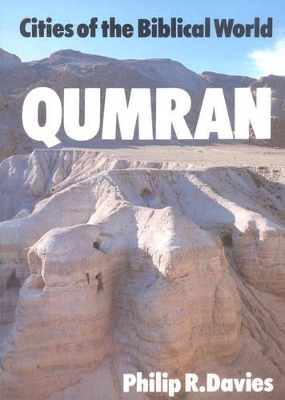From the Cities of the Biblical World series - a series describing the recent archaeological developments at major Biblical sites for the general reader, the student and the tourist. Until the discovery of the Dead Sea Scrolls in 1947, and the subsequent excavation of Khirbet Qumran, the existence of a Jewish settlement near the Dead Sea remained unsuspected by biblical scholars. Apart from one possible allusion in the Old Testament, the site is unrecorded in the Bible, and no hint emerges of the fascinating community which inhabited it in Jesus' own day. In Biblical terms it could be described as the discovery of the century, all the more remarkable because from its last occupation in AD 135 until the arrival of the archaeologists in the wake of the Scrolls' discovery, Qumran remained a well-known but little considered ruin. Philip Davies explains how the archaeological evidence helps us to interpret the writings in the scrolls, and how the writings in turn help archaeologists to understand their discoveries. The author puts the site in perspective, explaining its history and development from an early settlement, possibly in the time of King Uzziah (781-40BC), to the community which produced the famous scrolls. The only substantial corpus of Jewish literature from this time, the scrolls offer the reader an insight into the organisation of the community and its daily activities, the religious and philosophical beliefs, rituals and hopes, which characterised Judaism in the first century AD. The Scrolls have provided the only substantial corpus of Jewish literature from this age.
- ISBN10 071882458X
- ISBN13 9780718824587
- Publish Date 24 June 2004
- Publish Status Out of Print
- Out of Print 7 October 2003
- Publish Country GB
- Imprint Lutterworth Press
- Format Paperback
- Pages 128
- Language English
